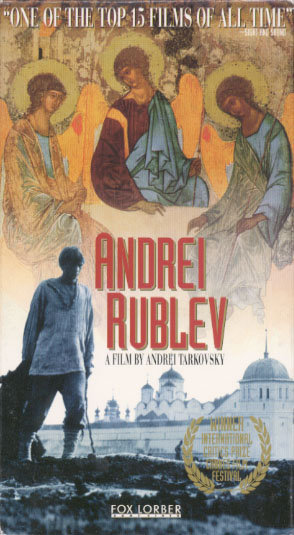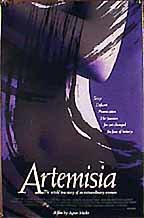Art has existed for many decades where many people have expressed their creativity in ways that capture attention from different personalities. Therefore, many advertising companies have been using specific works of art or artists to promote their sales and the outcome has been good.
In a survey sensitive to the art that involved 46 people aged between 18 and 24 years responding to a questionnaire, 85% of them admitted that advertising is an art. The results thus permit organizations to use art in their adverts that promote their sales by creating awareness (Gelb and Yong 2946).
However, 15% of the respondents were against the use of art for commercial purposes because it is against the traditions of art, which were not related to merchandise or marketing tools. 85% of the respondents who supported use of art in advertising said there was greater impact in an advert when it contained artistic values because communication is most effective when it contains humor and originality as part of the message.
This knowledge has therefore led to companies concentrating on the message and image more than the products on sale as these capture more attention.
For every advert to be effective, it must contain modern art that emphasizes on realism and aesthetic concept. Most companies are aware that the greater part of their target is young people who want to discover new products in the market.
The same group of young people is the most exposed to various types of media such as television, radio, newspapers, bills and posters, mobile technology and social media such as internet as well as pop art concepts. 40% and 60% of females and males respondents respectively agreed that most of the contents of advertisement that they remembered occurred in areas where they were shopping goods or services as well as luxury areas (Gelb and Yong 2946).
Therefore, companies must develop humorous and original adverts with greater emphasis on their brand in order to attract more interests to their target group (Gelb and Yong 2946).
Companies and organizations design adverts using various techniques rich in aesthetic values to reach their target customers. The role of the art in the adverts is to give an image to the company and its products.
When an image is used, the targeted consumer is linked emotionally to the product. Artists use this method to develop the image of the company and products using values that would capture as much emotional attention as possible. The artistic values used to develop adverts include lines, shapes, forms, textures, colors, value and space.
When lines are used, they create an impression of speed, togetherness, and the intended purpose of an object. They represent the basic unit of every work of art since they develop reality through visual basics. When horizontal lines are used in art, they create an impression of passiveness while power and state of action are suggested using vertical lines. Shape in art provides different meanings such as feminine when a curve is used or masculinity by use of angles (Gelb and Yong 2946).
Various products require use of different shapes to ensure that the best association between the product and targeted user is established using the basic ideas. Forms portray outward manifestation of what is inside an object. Form comes through integration of lines and shapes to give the basis of the rest of the elements of art.
Texture in a product suggests the quality of the surface where for instance smooth texture implies a refined state while rough texture portrays a tough state. Colors help to develop power in an image. For instance, when red is used it suggests the state of being young and powerful. Blue color suggests the state of being relaxed, which finds its use mostly in advertising furniture. Value is closely related to color where the intensity of the color can be varied to obtain different values.
When colors are intense, they imply speed especially in adverts about sporting cars. In all the artistic values, the most comprehensive is space as it is a combination of the entire elements of art and thus central of all the elements (Gelb and Yong 2946). Therefore, space does not suggest emptiness but equal distribution of things in a given area or environment. For instance, in an advert about automotive, the road and horizon can be given emphasis while the artists concentrate less on objects.
How Modern Filmmakers and Television Producers Employ Historic Art Monuments (Architecture, Painting and Sculpture) in their Work
Film is a recent medium compared with art in form of painting, dance and works of literature, which have been there for several decades. Although filmmakers have been in existence for less than a century ago, they have proofed that the art of film is being established and gaining more power than any other form of art (Morris and O’Shaughnessy 45-65).
People with high creativity have provided the society with the most valued experiences. Filmmakers use techniques to narrate stories, create emotions and generate ideas for the audiences. Most movies refer to historic art monuments.
Some movies directly refer to historic popular artists while others mention indirectly about famous historic art. For example, the work below is about Adrei Rublev in the year 1969 (Morris and O’Shaughnessy 45-65). This film is popular and depicts Adrei Rublev who was a Russian icon painter eighteen centuries ago. The film is called sight and sound magazine and is among the 15 most popular films in the history of films.

In another reference, the artwork below is of an Italian painter called Artemisia in 1997. Although the film received much condemnation for glossing over the action of Agostino in raping her, depicting it as though the two consented to have the affair, from the perspective of the painter the work is interesting (Morris and O’Shaughnessy 45-65).

The following artwork of Ben-Hur in 1959 does not contain a lot of art stuff but for any reader who has followed Roman art he or she would be interested with the fun in the chariot race action. The scene created through this recreation resembles the Circus Maximus in Rome. The film is regarded as the best in capturing this greatest chase in the history of races (Gelb and Yong 2946).

The pre-eminent art form of the current generation is cinema, as it possesses great impact in the modern world and ability to change the way of thinking as well as culture among students.
Television production use historic art to empower students to be creative and acquire all aspects of art such as engaging audiences emotionally and narrate stories using a wide range of skills watched in the cinemas. The projects viewed in films and televisions programs range from traditional artworks to the experimental works in the modern world (Gelb and Yong 2946)
Works Cited
Gelb, Betsy and Yong Zhang. “Matching Advertising Appeals to Culture.” Journal of Advertising 25.3 (1996): 2946. Print.
Morris, Holbrook and O’Shaughnessy John. “The Role of Emotion in Advertising,” Psychology and Marketing 1.2: (1984), 45-65. Print.